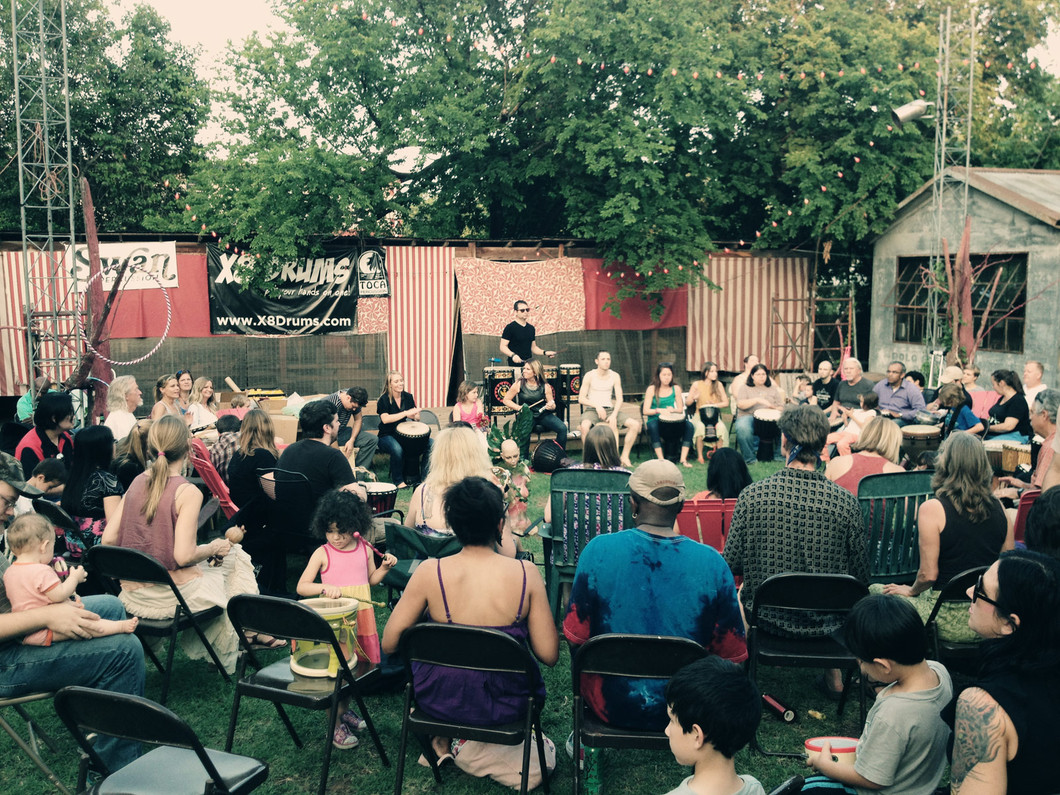What to Expect at a Drum Circle
You’re heading to your first drum circle, excited that you’ve finally found your “tribe” of people and a place to express your creativity and spirituality through the magic of drumming. It is an exciting time, and if you have not ever been to a drum circle, you may not know exactly what to expect from the experience. Just like drums and people, drum circles vary in many ways. There are different types of drum circles, each with its own set of guidelines and purposes, so before you bust out your Fanga rhythm on that beautiful new Djembe, be sure to keep in mind a few simple tips for your enjoyment, and that of the other members of the circle.
Drum circles occur for different purposes, have different styles and encompass different aspects of communities.
- “Open” drum circles are community-oriented circles that promote socialization within a neighborhood, community or region.
- Healing drum circles are established in order to bring people together in the spirit of healing each other through the power of drumming.
- Facilitated drum circles may occur within a business retreat or other team-building event that calls for cooperation and teamwork.
There are also drum circles that promote religious or spiritual groups and causes, drum circles for charity and cultural drum circles that can celebrate African, Asian, Caribbean or Native American cultures and drumming styles.
Once you are sitting within a drum circle, there may be unspoken guidelines about the drumming, instruments or other issues depending on the type of circle. Always feel free to ask about the particulars of the circle you are attending and what may be expected of you as a newcomer. Some circles may request you bring your own drum or other percussion instrument, while others may have an extra Djembe or Shekere for new drummers to use. Some say that if an instrument is in the center of the circle, it is free to use by anyone, but if an instrument is sitting next to a member of the circle, it is taken. To be sure, always ask to use an instrument. Be sure not to wear jewelry when playing someone else’s drum, as the jewelry can damage the instrument.
When the drumming begins, the first thing you should listen to is the steady beat that is played. This rhythm sets the speed and tone for the duration of that song and is what the other drummers and percussion players will use to embellish with their own instruments and sounds, as well as use to keep any solos within the cooperative tempo of the circle. Most drum circles recognize the ability of others to take the current rhythm and enhance it with their own creative beats. Always remember, though, that a drum circle is a circle, and the most important part is to keep the cooperative environment going and give everyone a chance to add their energy and rhythm to the group.
Drum circles can be exciting events that help build community, spur creativity and give the participating drummers experiences they may not soon forget. Keeping in line with the general spirit of people sharing is quite possibly the most important aspect of joining and participating in a drum circle. If you are newly joining a drum circle, or even considering just bringing your Djembe to a local circle to see what it is about, always keep in mind the purpose of the circle and basic drum circle etiquette to make your experience, and that of the other participants, as beneficial as possible.
Recent Posts
-
X8 Drums Play-Along Backing Tracks
The new X8 Play-Along Series is being produced for our musician friends wanting a fresh way to work …9th Feb 2025 -
What is the Best Size Djembe for Beginners?
If you're new to the world of percussion and interested in learning the djembe, you're in for a t …16th Jul 2024 -
The Benefits of Becoming a Drumming Teacher: Transforming Passion into Profession
Why become a drumming teacher? Becoming a drumming teacher is an excellent way to share your pas …22nd May 2024




